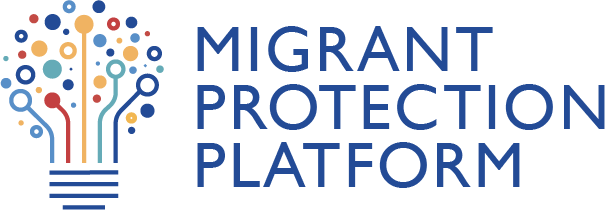The handbook provides operational guidance and tools to support effective protection responses in situations of internal displacement. Specifically, the Handbook seeks to: ensure staff members are familiar with the core concepts, principles and international...
Guideline
The lack of reliable and comparable data on trafficking in human beings remains one of the main obstacles in effectively preventing and combating trafficking in human beings as well as protecting and assisting victims. IOM and the Austrian Federal Ministry of...
This booklet provides an overview of what protection means in practice, who is responsible for making it happen and what those in need of protection can expect of humanitarians. The risks that people face can take many forms and require a range of actions...
The Minimum Standards for Child Protection in Humanitarian Action (CPMS) have become one of the key resources for humanitarian workers since its launch in 2012. The CPMS have been developed to support child protection work in humanitarian settings by...
The practical guidelines contained in this publication provide guidance on how to determine the need for a response to migrants in situations of vulnerability, and on how to plan for, finance, monitor and evaluating such response, accordingly. This publication...
Practical guidance contained in this publication provide information on how to develop and implement referral mechanisms for the protection and assistance of migrants vulnerable to violence, exploitation and abuse. The objective is to strengthen operational...
Human rights don’t disappear the moment an earthquake, a hurricane or a tsunami strikes. We witnessed after the Indian Ocean tsunami, the earthquake in Haiti and many other disaster situations that during relief and recovery efforts the protection of human...
The overall objective of this framework document is to strengthen cooperation between IOM and UNHCR with respect to the identification and protection of victims of trafficking (VoTs). Specifically, the document intends to encourage the development of standard...
This Guidance Note provides guidance for the mandatory mainstreaming of humanitarian protection principles into IOM’s response to crises. This note is intended to help every IOM staff involved in crisis response to apply these standards in performance of their...
For many trafficked persons, the physical and psychological aftermath of a trafficking experience can be severe and enduring. Health providers may come into contact with victims of trafficking at different stages of the trafficking process and at different...
This first set of Bali Process Policy Guides introduces policymakers and practitioners on how to implement international legal obligations to criminalize migrant smuggling at the domestic level. Since its inception in 2002, the Bali Process on People Smuggling...
This Convention was adopted in June 1999 by the General Conference of the International Labour Organization at its eighty-seventh session, and it entered into force in November 2000. Each ratifying Member agrees to "take immediate and effective measures to...
Adopted in November 2000, this Protocol entered into force in December 2003.
The General Assembly adopted Resolution 69/149 in December 2014, issuing a call for action against trafficking in women and girls, who face increased risk.
Adopted in May 2000, by resolution A/RES/54/263 at the fifty-fourth session of the General Assembly of the United Nations, this Protocol entered into force in January 2002.
Ratifying Members undertake "to suppress the use of forced or compulsory labour in all its forms within the shortest possible period." The text linked below reflects the Protocol to Convention No. 29 that was adopted in 2014, which acknowledges that the...
Child Protection Case Management (CP CM) is part of the essential services that cannot be stopped suddenly, but which requires adaptation to the new emergency. This includes the Best Interest Procedure (BIP) in refugee settings. With many schools and childcare...
Worldwide, an estimated 152 million children are in child labour, almost half of them, 73 million, work in hazardous child labour. The global health crisis is leading to mass disruption with far-reaching consequences. Many children are out of school and...
Since its inception in 2002, the Bali Process on People Smuggling, Trafficking in Persons and Related Transnational Crime (Bali Process) has effectively raised regional awareness of the consequences of people smuggling, trafficking in persons and related...
Since its inception in 2002, the Bali Process on People Smuggling, Trafficking in Persons and Related Transnational Crime (Bali Process) has effectively raised regional awareness of the consequences of people smuggling, trafficking in persons and related...

